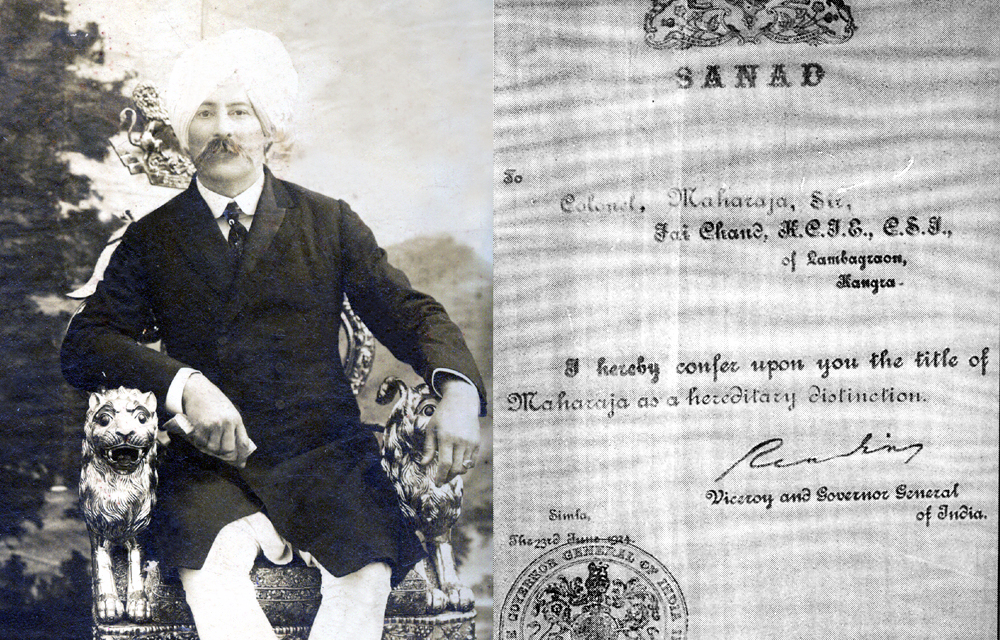
Maharaja Jai Chandra
Raja Ludar Chandra had succeeded his father (Raja Fateh Chandra) to the Jagirs of Rajgir and Changar. He had become a very good friend of Sher Singh and as a sign of good faith Sher Singh gave Ludar Chandra an additional Jagir of Batala in Punjab.
In A.D. 1833, Maharaja Ranbir Chandra (eldest son of Maharaja Anirudh Chandra) came to the throne (without a kingdom). On the request of Col. Wade, Maharaja Ranjit Singh granted Ranbir Chandra the Jagir of Mahal Morian (valued at Rs. 50,000/-). For a while he and his family resided at the village of Kurhin. From here he started to re-build his empire by gathering resources and men. In the first Sikh war of A.D. 1845-46 Raja Ranbir Chandra rendered conspicuous service to the British Government. He wrested from the Sikhs the ancient fort of Tira Sujanpur, Riahyal and took possession of the fort of Pathiar and Karot in the Palam, district they also re-occupied the forts of Sola Singhi and Chaumukhi in Nadaun.
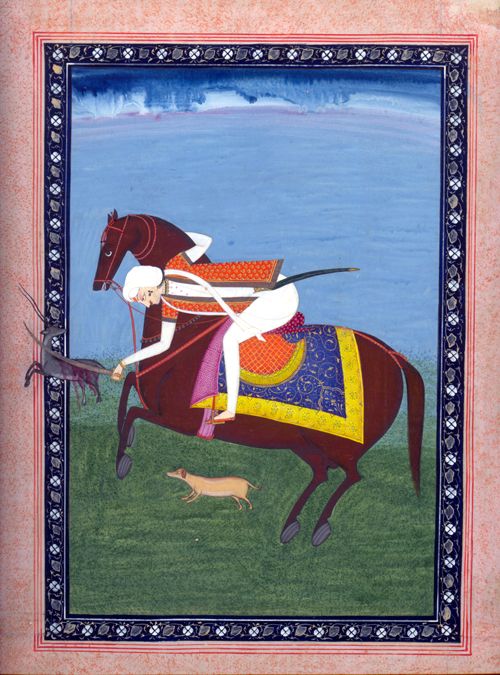
Raja Ludar Chandra
By the end of A.D. 1846, British had acquired the territories of Kangra and the Shimla hills. Maharaja Ranbir Chandra expected the British to place him on his ancestral throne, like the British had done with all the rulers of the Shimla hills. This was not to be as the British wanted to keep Kangra for themselves as a trophy, in keeping with their frontier policy (which was created to check the advance of imperial Russia). On hearing of this Maharaja Ranbir Chandra revolted against the British. Unfortunately his revolt was short lived, as he died in early A.D. 1847.
His younger brother Parmodh Chandra sat on the Gaddi and was anointed Maharaja. In character he was more spirited than his brother and continued the revolt. He acquired the forts of Hamirpur, Abheymanpur. On his acquisition of these forts a traditional gun salute of 101 guns (same as the King of England) was fired from the ramparts of all his forts in order to inform the people that their hereditary King had now re-assumed power. Maharaja Parmodh Chandra strengthened his army and planned an attack on the British who were stationed at Pathankot & (in the second Sikh War), he was joined by the Rajas of Jaswan, Datarpur and Nadaun.
At the head of an army of 8000 brave Katochs, Maharaja Parmodh Chandra crossed the river Beas to take on the might of the British Empire. Col. Jack Lawrence incharge of the British defense mobilized the native infantry and started his march towards the advancing Katoch army (it is believed the Col. Lawrence was under the authority of the Commissioner to give the Katoch Chiefs their independence and make them ruling chiefs under the British only if they disbanded their troops). The Katoch chiefs did not listen to the British advice and continued with their course of action, except for the Raja of Nadaun (the rear guard of the Katoch assault) who betrayed the cause by disarming his troops & in return was granted his state and a hereditary honor of nine gun salutes.
The encounter between the British and the Katochs was very brief and in the battle, Maharaja Parmodh Chandra was injured and had to retreat to the fort of Tira Sujanpur. For two days the dialogue continued between the Katoch Raja and the British. Maharaja Parmodh Chandra finally surrendered to the British and was deported to Almora (his Maharanis were allowed to retain the fort of Tira Sujanpur, Hamirpur and Mahal Morian and their forests of Palampur).
- (Raja Ludar Chandra did not take part in the revolt and was officially recognized as the Raja of Rajgir - who resided at Lambagraon - he also presented to the King of England two towns within the boundaries of his 280 sq. miles. States - Jaisinghpur and Thural which were termed as Badashayat - for this he was given a Bahaduri).
Maharaja Parmodh Chandra died (a freedom fighter) in Almora in A.D. 1851 without an issue. Now the question arose as to who would be the next head of the Katoch clan (as the throne could not be left empty).
Claimants arose from - Nadaun, Jaswan, Datarpur, Siba, Guler and Lambagraon.
- Nadaun was rejected because their ancestor Jodhbir Singh was not of a pure lineage (illegitimate son of Maharaja Sansar Chandra).
- Jaswan and Guler were rejected because their state had already broken off from the parent state many centuries ago. They had also changed their surnames.
- Datarpur and Siba were not even considered claimants because they were off shoots of Jaswan and Guler respectively.
- So the only state remaining was that of Rajgir (Lambagraon) Raja Partap Chandra (the great grand nephew of Maharaja Sansar Chandra) had descended upon the Gaddi of Lambagraon & he was now formally adopted by the elder Maharani of Maharaja Parmodh Chandra, as the 484th Maharaja of Kangra. He was granted all the states and the families' nau lakha haar (built in 1060 A.D.) which were under the Maharanis of Maharaja Parmodh Chandra. The British recognized his adoption and his position as the head of the Katoch clan, but they did not recognize the title of Maharaja of Kangra because most of the area of Kangra belonged to the British (9321 sq. Miles). After his adoption Maharaja Partap Chandra (recognized by the British as Raja) was in control of areas which stretched from Baijnath to Hamirpur and Jwalamukhi to Chandhiar (an area of 501 sq. miles whish was nothing in comparison to the kingdom once ruled by his ancestors). He, in order to please the British Government which now controlled all of Punjab from Lahore built a haveli in the city of Lahore. Maharaja Fateh Chandra died in A.D. 1864 and was succeeded by his son Maharaja Jai Chandra (he was only a minor then). His state was put under the care of the court of wards. In A.D. 1883 Maharaja Jai Chandra officially took charge of his state. The following information on Maharaja Jai Chandra has been taken from a letter written by the Rajas of Jaswan, Guler, Datarpur, Dada Siba and Nadaun & this letter had also been signed by all the elders of the Katoch clan (on behalf of their families). This letter addressed to his Excellency the Viceroy Governor General of India (in January, 1924), requested him to elevate Maharaja Jai Chandra to his old family status of a ruling chief with suitable additions to his state.
"Raja Jai Chandra's illustrious ancestors have ruled for hundreds of years over the ancestors of the memorialists (writers of the letters) who have stood by the royal family and have shared with them the hardships and glories of hundreds of battles. Even now at the time of peace we will proudly follow his sword, for his country.
- Even though, the Katoch Kings driven by disappointment and despair fought against the British Government... Your Excellency we the memorialists are convinced that the prayer we are putting forward is not an unreasonable one. The family that Maharaja Jai Chandra has the honor to represent is far more ancient and at one time enjoyed greater power than the ancestors of the Maharajas of Mysore and Banaras (these two rulers were made ruling chiefs due to the ancient importance of their states, they were both entitled to a gun salute of 21 guns and 17 guns respectively). Coming nearer to home the British Government relieved all the states in Punjab and Shimla hills from the Sikh rule of Maharaja Ranjit Singh and without exception even the tiny hill states of Shimla were given the honor of gun sales and made ruling chiefs by the British.
- In A.D. 1903, Raja Jai Chandra was granted the power of adoption, a privilege allowed only to the ruling chiefs. (This honor was granted by Lord Curzon, the Viceroy and Governor General of India).
- In A.D. 1908, the title of Raja "as a hereditary distinction" was conferred upon him by Lord Minto Viceroy & Governor General of India.
- On June 23, A.D. 1922, Raja Jai Chandra received the title of Maharaja as a personal distinction (he received this title in Lambagraon after which he also purchased land in Delhi to establish a state house).
- Maharaja Jai Chandra is highly educated, having received education from the Princes School of Mayo and Aitchison College - he also holds a hereditary seat on the Board of Governors of Aitchison College - (his father Maharaja Partap Chandra was a founder member of this institution), and is one of the most cultured chiefs of Punjab.
- His excellent management and administrative qualities can be seen in his work as a member of the Imperial Council, the member of the Punjab Legislative Council and also as the elected President of Punjab Chiefs Council.
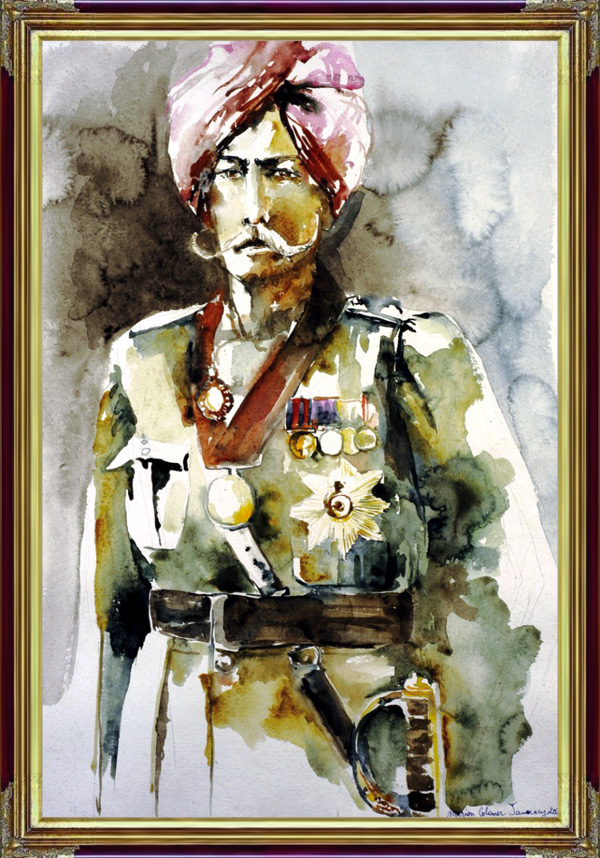
H.H. Maharaja Colonel Sir Jai Chandra Katoch | KCIE, CSI, FRSA, Dharam Rakshak, Dharam Rattan of Lambagraon - Kangra
- In his own state he has the power of a Magistrate and Civil Judge. He is also an honorary Colonel in the British Army. He took an active part in the expedition of Hazara, where he received the medal of K.C.I'E. (Knight Commander of the Indian Empire). In the expedition at Chitral he received the honor of C.S.I. (Companion to the Star of India).
- During the First World War Maharaja Sir Jai Chandra supplied 1000 recruits and contributed generously to the war loan and the Red Cross. He also organizes the "Lambagraon War League" & this league won 5th place among the 250 districts of the British Indian Empire. By October, A.D. 1916, he had supplied almost 21,000 men to the Dogra Regiment.
- (The Dogra Regiment in its early years of foundation comprised of the personal armies of Maharaja Jai Chandra and the Maharaja of Kashmir. - Maharaja Jai Chandra also established within his state a gun manufacturing factory, which supplied rifles to the British army - the work Maharaja Jai Chandra did for the people of Kangra is still remembered in the Dogra Regiments & his policies are still in use, i.e. The Dogra regiments get 30% compulsory reservation in all the regiments of the India Army - at one time Maharaja Jai Chandra and his son were the eldest and the youngest (respectively) members of the British Indian army - there are cups trophies, portraits, photos and a silver model of the Kangra fort in the headquarters of the Dogra Regiments (these were presented by Maharaja Jai Chandra to the Dogra Regiments)". Maharaja Jai Chandra introduced horse polo in the Dogra regiment.
- Maharaja Jai Chandra founded the Hindi Newspaper "Samrat Vijaya" explaining to his people the benefits of education.
- His sympathetic administration of the Temples in Kangra (his state)Haridwar, Mathura and Brindavan (Kangra Mandirs) has earned him the much coveted title of Dharamratan, which was conferred upon him by the Bharat Dharam Maha Mandal (the Chief Religious Organization of the Hindus in India).
- Maharaja Jai Chandra has gifted the spacious middle school building in Lambagraon to his state. He also gifted to the people of Sujanpur the newly constructed Palace (this was build after the A.D.1905 Earthquake, which demolished most of Kangra valley along with its forts and palaces. This new palace was not liked by one of his Maharanis is presently being used as the Military School, the out house of this palace is presently the residence of the Principal of the Military School).
- He also denoted to Sujanpur the 170 acre Chaugan (flat grassland - presently with Central Government of India) as a public park.
- In Kangra he has denoted most of the shops around the Brijeshwari Temple (to their occupants), he also denoted land for the Rajputs Society, and the Missionary School (still existing) was originally the site for a palace being build after the earthquake of A.D. 1905. The Brahmins of Kangra requested Maharaja Jai Chandra not to build a residence which over looked the Brijeshwari Temple as it would be un-auspicious. He has also constructed and funds the King Edward Memorial Hospital in Lambagraon, where almost 37,000 patients have been looked at and a thousand admitted over the year.
- At the time of severs famines he sent out grain from his granary to be distributed among the poor for free. During an influenza epidemic a team of doctors with medicines were sent all around the state on the expense of Maharaja Jai Chandra.
- In the year when the rains are scarce. Maharaja Jai Chandra along with his subjects brought water from the river Beas (bare footed) and poured it over the Shivling in the ancient Shiv Duala temple of Lambagraon, until it was completely submerged (these practice of Jalchai is still done by the family in order to bring rain).
- Maharaja Jai Chandra is one of the most popular chiefs, deeply loved and highly respected by all classes. It will give intense satisfaction to the whole country side, if the old status of ruling chief is conferred upon him.
- Your Excellency will be doing an act of justice by restoring the noble family of Maharaja Jai Chandra to its ancient status.
- The memorialists respectfully pray that your Excellency will take the necessary measures to get a favorable consideration to our prayers... ."
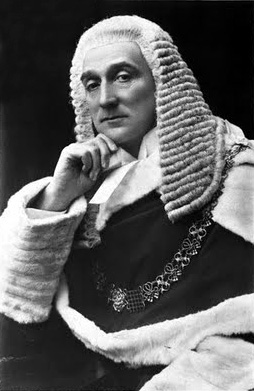
Lord Reading
A presentation of gifts and valuable items such as the heirloom necklace, made in A.D. 1060 - at that time believed to be worth 9 lac rupees. (In the 11th Century A.D. there existed 9 lac household in the kingdom of Kangra, who each contributed one rupee towards the making of this necklace) - this necklace is presently in the tower of London along with the British Crown Jewels & is called the Kangra Haar - was made along with this letter to the Viceroy and Governor General of India.
In April of A.D. 1924, the Viceroy and Governor General of India, Lord Reading on his way to Mandi, stopped at Lambagraon to meet with Maharaja Sir Jai Chandra (where it is believed that Maharaja Jai Chandra was promised the return of Kangra) - a house presently called the Angrezi Kothi (house for English) was built for the one night stay of the Viceroy and his party & after this meeting Maharaja Jai Chandra started construction of a large palace in Lambagraon.
Two months later on June 23rd A.D. 1924, Lord Reading issued a Sanad which granted Maharaja Jai Chandra the hereditary distinction of Maharaja of Lambagraon Kangra, along with this distinction he was returned the fort of Kangra (the fort once again came back to its founder family but was now in ruins due to the A.D. 1905 Earthquake). Along with this title he was also given a personal honor of 11 gun salutes.
- (The Rajas who had signed the letters were given the honor of 9 guns salutes each within their states).
Maharaja Jai Chandra (a political sufferer at the hands of the British) was not satisfied and felt that a promise made by his very good friend Lord Reading was broken.
- (When the British moved their capital from Delhi to Shimla, Maharaja Jai Chandra used to be a regular guest at the Viceregal Lodge here both the Maharaja and Lord Reading used to sit in the evening for a drink, the water for which was brought is so good that the present family has decided to bottle it under the name of Kangra Mineral Water).
As a result of not being returned the State of Kangra - Maharaja Jai Chandra swore never to see Kangra (town) (He went blind folded to Kangra to inaugurate the new Brijeshwari Temple which was rebuilt after the 1905 Earthquake) and never to use the ancestral title of Maharaja until the whole of Kangra was returned to him (the present family still abides the promise). On this account Maharaja Jai Chandra did not take his position as a voting member of the Chamber of Princes (a privilege given only to ruling chiefs).
After this disappointment Maharaja Jai Chandra shifted his residence and court (500 officials and about 700 staff) to a Maharaj Nagar (a township built by him), with his 9 wives and 18 mistresses. The construction of the palace in Lambagraon was abandoned, only the plinth and map remain.
- Some other stories on Maharaja Jai Chandra are very interesting - in his early days he befriended the Maharaja of Patiala, who invited Maharaja Jai Chandra for a party which lasted for seven years! It was only when the British threatened Maharaja Jai Chandra with the annexation of his state that he returned to the Kangra Valley.
- One of his Maharanis was from Bilaspur and on the days of their marriage, when Maharaja Jai Chandra entered his bride's room, she did not get up for him and on this account she was sent back to her father, the Raja of Bilaspur.
- Maharaj Nagar was originally built as a Hunting Lodge which was later converted by Maharaja Jai Chandra into an orchard palace (within an area of 3,000 acres) - it is situated below the temple fortress of Asha Puri and still belongs to the family.
- In order now to please the British he helped them in establishing the Tea Estates (existing ever now) near Palampur by donating his forests for the conversions into Tea States.
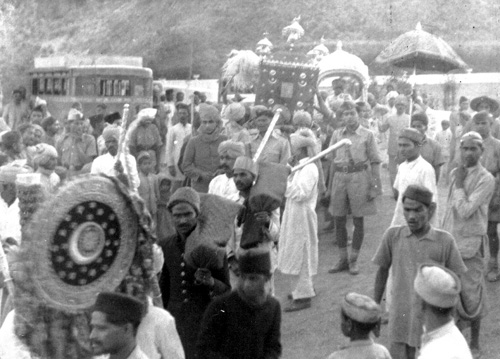
Maharaja Dhruv Dev Chandra in Procession
- He introduced local postal and revenue stamp papers.
- The bank of Kangra too was started by him. This bank was closed down due to India-Pakistan partition in 1947 (as it was based in Lahore, Pakistan). The present Kangra Co-operative Bank is run on the same basis.
- He also re-established the old festivals of Holi, Dussehra and Shivratri - which are all state level functions now. He presided over the ancient festival of Holi in Sujanpur, Shivratri Mela in Lambagraon, Dussehra in Jaisinghpur & all these festivals till 1972 were presided over by the family (they are now official state functions).
Maharaja Jai Chandra died in A.D. 1933, and was succeeded by his eldest son Maharaja Dhruv Dev Chandra (at the age of 9). He too like his father was educated at Aitchison College Lahore. In A.D. 1945, he married the Princess of Tehri Garhwal.
